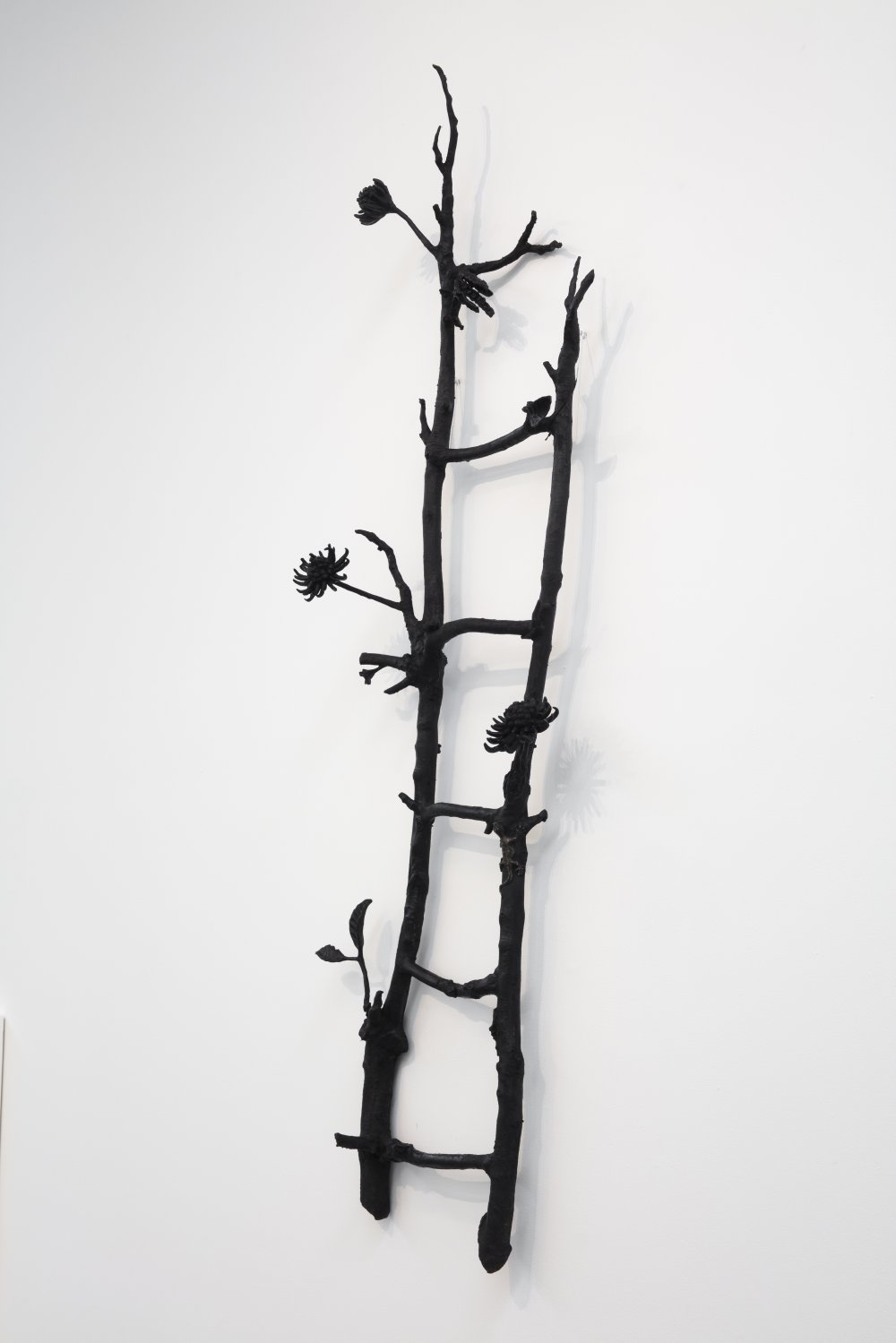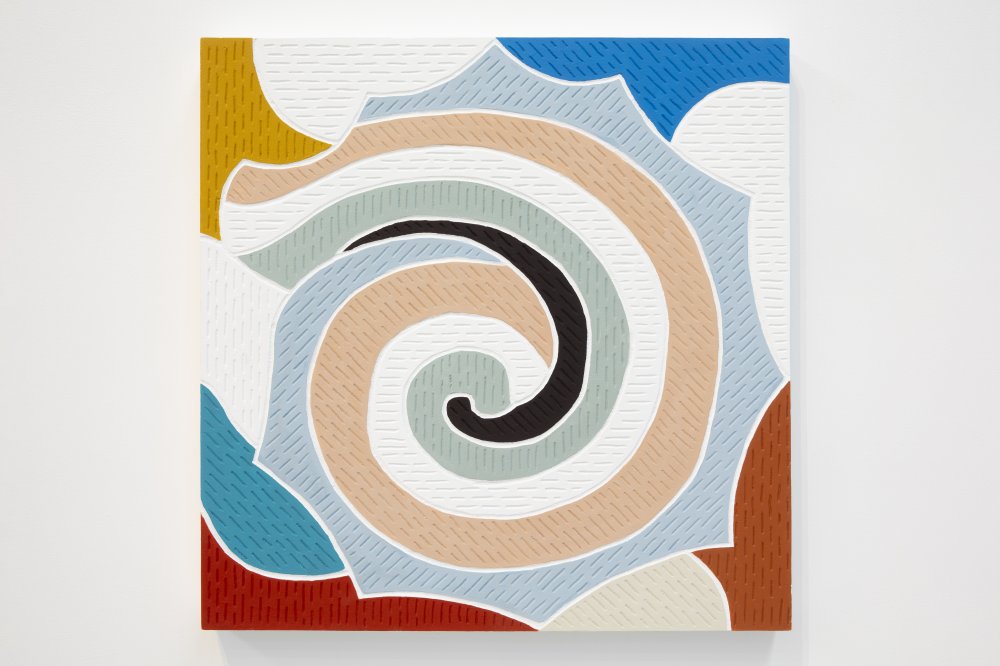
Review
Why is it so heavy to carry the South?: 'With the South on my back' by Naufus Ramírez-Figueroa
by Guillermo Boehler
At Nordenhake
Reading time
5 min
My first encounter with Naufus Ramírez-Figueroa’s work was in 2016. I was in the middle of my studies at the University of Costa Rica and I was beginning to get the hang of contemporary art: the body in space, of how the personal realm is political, of video as a medium, of the abstract as a contingency to representation, representation as the alternative to the official discourse. That year I attended the X Biennial of Central American Art in Costa Rica, curated by Tamara Díaz Bringas. In a large-format projection, in Hall 1 of the Museum of Contemporary Art and Design, I came across Feather Piece (2013) by Naufus, a video where the artist performs in front of a white background and pierces his arm with black feathers; a kind of fallen angel, an angel who lost their possibility of flight or a being who wants to claim their divinity, despite any prejudice that may be attributed to them.
Lacuna.¹
Once again I encounter feathers and thorns. A bird rests on the branch of a black bronze ceiba (Ceiba branch). Now, it keeps watch over the layers of color and lines carved into the paintings' surface; more bodies that constitute a memory, the trauma covered in vivid hues in low relief, and a white that makes the figures visible (Study of Cacaxtla mural #2, #3, #4, #5, #5, #6, and #7).

The dreamlike, the escape, the exit routes, black bronze floating, stairs (Erythrina Guatemalensis ladder), the resting of the "corn eater." Nordenhake Gallery presents the work of Naufus in the exhibition With the south on my back.
Remembrance and memory activated by bodies, mediated by them. Are bodies the Central American tradition of contemporary art? Latin American, perhaps? It's not the right time to create classifications, but in the imaginary I've created for myself, Naufus's work is on the same stage as Regina José Galindo, Patricia Belli, Priscila Monge, and A1-53167 (Aníbal López). Despite coming from different generations, they share a tradition of forcing the body to recall events, of taking control of history—that official history that has been repeated endlessly, that history of pain, that has damaged our ability to form synapses, and that has limited us to unstable, narrow straight lines. They criticize it, shatter it, break it down, ironize it, and transform it with the body.

Another Latin American tradition that combines anonymity and universalization is the silhouette. Let us recall Ana Mendieta and, before to her, the Argentine silhouette, which appears in the paintings of Priscila Monge, the dolls of Belli, the engravings of Sila Chanto, and the "ghosts" of Galindo's most recent work. Akin to some of Naufus's earlier works (such as Dressmaker's geometry 1#, 2#, 2021), the silhouettes in the Studies of the Cacaxtla murals acquire color, merge through white lines, create layers, and intermingle in an abstract style that suggests assemblages between the forms that make them up. Is this not how memory is formed?
Lacuna.
Eternal connections between various elements such as amorphous patterns, symptoms, traumas, reconciliation, the artist's time spent in Mexico, his distance from this country, his travels that will influence his artistic career, Latin Americans, our shared ancestors, a collective experience of migration, massacres that should represent not only Guatemala but Mexico as well, lives that were symbolized throughout Central America and the Caribbean, shared imaginaries, transfigured, pains that are not translated, confused, a cruel fright, a war in which we were not participants, a joyful encounter with a tragic past, a past teeming with racialized and uprooted bodies.
The white hue that defines and supports the many colorful shapes, like puzzle pieces jumbled inside a box. Someone is trying to recall something, but they are unable to accomplish it on their own and unable to stop focusing on what is around them. The disorganized fragments reveal some information, but not all of it.

The narrative ultimately takes the form of a vortex, with the Study of the paintings at Cacaxtla #7 closing and reopening many times. Designing patterns that assign values to the same color tone and blend pieces together when necessary to convey a message.
Lacuna.
Although the exhibition set-up does not add to the discourse of the works, the pieces that make up With the south on my back are the summary of a project that has yet to reveal itself.
The visual works of Naufus demand a deliberate and contemplative glance that unlocks the mystery of memory assemblages—those that surface inside the compositions to expose the anachronism they perpetuate. The black bronzes, which mimic the branches of Mesoamerican trees, also pay homage to a sacred lineage that shares symbols, knowledge, and rituals, while also calling attention to a common area that existed before nation-states were established. A link, whether buried in a memory or in the query that undermines the reasoning of this letter full of nostalgic tone, is missing between the synthesis of the shapes in the Estudios de los murales de Cacaxtla and the secret enchantment of the black branches: Why is it so heavy to carry the South.
The gaps in memory are filled by stimuli that fire in all directions, meaning-filled possibilities, impressions such as the surface of these paintings carved like engravings, of these synthetic forms of bodies, shields, bones, viseras, warriors, and children; black bronze, projected tree shadows, magic devoid of life or a missing tree, a missing myth, a missing remedy for this ailment; and what weighs more on Naufus's back, on ours, this work of wood and metal, or the history of the South and its voids? There, in the liminal area between forms, is where shadows and silhouettes join us in this question.
Translated to English by Luis Sokol
¹ The term in Spanish "laguna" makes reference to a blank space or missing part as well as the term "lagoon". The author uses it in this text to mean both.
Published on February 17 2024